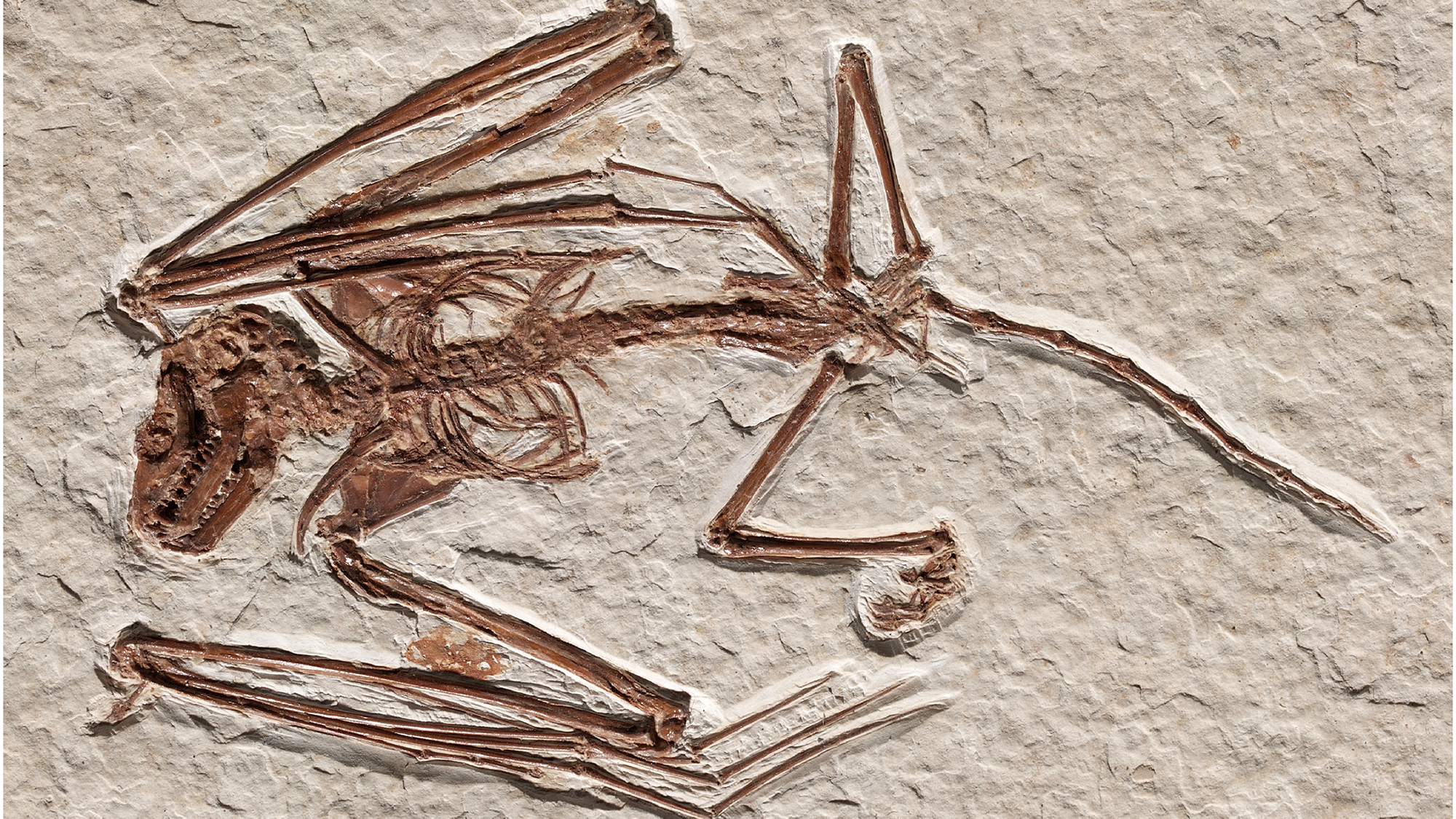

A team of scientists from the United States and the Netherlands have discovered a new species of bat based on the oldest bat skeletons ever discovered. The findings are described in a study published April 12 in the journal PLOS One.
The new species is named Icaronycteris gunnelli (I. gunnelli) in honor of the late Gregg Gunnell, a Duke University paleontologist who died in 2017 and is remembered for his contributions to understanding fossil bats and evolution.
[Related: How killing vampire bats to slow rabies can go wrong.]
The now extinct I. gunnelli lived in Wyoming roughly 52 million years ago and the current scientific consensus is that bats rapidly diversified on multiple continents during this time in history. There are currently over 1,460 living bat species found almost all over the world, except for the Earth’s polar regions and a few remote islands.
The bat skeletons are about 1.5 inches long and were found near Kemmerer, Wyoming in the Green River Formation. The formation spans parts of Wyoming, Colorado, and Utah and is home to an extensive fossil deposit from the early Eocene—about 56 million to 47.8 million years ago. Scientists have found more than 30 bat fossils in the last 60 years within the formation. Until finding this new species, however, they believed all of them were from the same two extinct species, Icaronycteris index and Onychonycteris finneyi.
“Eocene bats have been known from the Green River Formation since the 1960s. But interestingly, most specimens that have come out of that formation were identified as representing a single species, Icaronycteris index, up until about 20 years ago, when a second bat species belonging to another genus was discovered,” study co-author Nancy Simmons, curator-in-charge of the American Museum of Natural History’s (AMNH) Department of Mammalogy said in statement. Simmons helped describe the second species named Onychonycteris finneyi in 2008, but always thought that there might be even more Eocene bats out there.
Recently, scientists from the Naturalis Biodiversity Center in the Netherlands began to look closely at Icaronycteris index by collecting measurements and other data from museum specimens to put together a dataset.
“Paleontologists have collected so many bats that have been identified as Icaronycteris index, and we wondered if there were actually multiple species among these specimens,” co-author and evolutionary biologist Tim Rietbergen said in a statement. “Then we learned about a new skeleton that diverted our attention.”
[Related: Both bats and humans test out talking as infants.]
The well-preserved I. gunnelli skeleton in this study was purchased by a private collector in 2017 and was subsequently purchased by AMNH. The team compared the skeleton with Rietbergen’s extensive bat dataset and saw that it clearly stood out as a new species.
A second fossilized Icaronycteris gunnelli skeleton that was discovered at this same quarry in 1994. It eventually made its way to the Royal Ontario Museum in Toronto and was also identified as this new species.
While there are fossilized bat teeth from Asia that are slightly older than these skeletons, the two I. gunnelli fossils represent the oldest bat skeletons ever found, according to the team. The I. gunnelli skeletons are also the oldest bat fossils that have been recovered from the Green River Formation, but they are not the most primitive, meaning not the earliest on the bat evolutionary tree. According to the team, this supports the idea that the bats in the region evolved separately from other Eocene era bats.
“This is a step forward in understanding what happened in terms of evolution and diversity back in the early days of bats,” said Simmons.